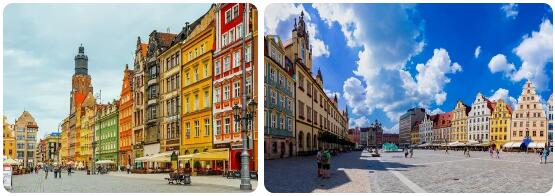Bulgaria Geography
The borders. – In its current political borders, Bulgaria occupies the NE side. of the Balkan peninsula, drawing a trapezoid in bulk between the following extreme points: 41 ° 12 ′ 48 ′ ′ (Karlak Dag) −44 ° 12 ′ 30 ″ (confluence of the Timok into the Danube) N. and 22 ° 21 ′ 14 ″ (Zatvorničeska Poljana) −22 ° 3 ′ 54 ° (mouth of the Ekrene) E., with an area of 101,146,170 sq km.
According to topmbadirectory, the name Bulgari (Βούλγαροι) in the Byzantine texts appears in the sources at the end of the century. V d. C. (for the first time with the Armenian writer Moses of Corene), when a part of them, abandoned the region between the Don and the Volga (where they had arrived from the Altai area not before the third century and had formed a strong political community) settled in today’s Bessarabia, to cross the Danube towards the end of the century. VII. During the Middle Ages, the modern era and also in times close to us, the name Bulgaria served to indicate a territory with significantly different extension and limits, which is mainly related to the lack of clear dividing lines towards south and west.
Only at N. (Danube) and E. (Black Sea) there is in fact a natural border; on the other two sides, the transition to neighboring states takes place in areas where the distribution of the different ethnic groups no longer traces the major and minor morphological or geographical units which, albeit with different criteria, it would be possible to isolate.
Given its position in the Balkan peninsula, which culminated at all times as a natural bridge between Central Europe and Asia Minor, Bulgaria is crossed by the great communication route that leads from the Middle Danube to Constantinople and Anatolia, as well as from the one that leads from the Wallachian lowland via Iskăr and Struma to Thessaloniki and the Aegean; routes that do not find serious obstacles to overcome either through the Balkans and Srednja Gora, or within the various cloisters of mountains that enclose Bulgaria from the west.
Flora and fauna – Even floristically Bulgaria does not have its own individuality. Alongside common species with the Transylvanian Alps, the Balkan they exhibit those reminiscent of the Caucasus (Chamaemelum caucasicum, Campanula Stevenii, C. Hemschinica); while the greater part of its floristic patrimony belongs to the dominion of central Europe, towards the south the typical Mediterranean scrub and the NE regions appear, although impoverished. they mark the passage to the Pontic steppes, whose greater aridity is underlined by the presence of halophytes. A certain number of endemic species is related to the isolation of the Balkan massif during a long period of geological history; as in all areas of ancient population, the influence of man has however profoundly changed the original conditions. The reduction of forest cover is more serious than it appears from the statistics: 30% of forest area only 1 / 4 is really usable: the majority is made up of spots or reduced to lean scrub-land.
The broad-leaved forests that once extended to the plains are now preserved (oaks, upper limit: 1000-1200 m.) Only along the rivers (Marizza, Danube) and the Black Sea, in the Deli-Orman, and on the slopes of the Balkans; in mountainous areas the beech (Fagus silvatica) covers extended surface, together with the conifers (especially Abies pectinata, A. excelsa and Pinus silvestris) that underlie the high rumps the Rila, Pirin and Rhodope. The conifers go up to 1800 m. on average, but they tend to rise to Pirin and Rila, where they exceed 2000 m., and then give way to alpine vegetation (Piuis montanus, Juniperus nana), which is however limited to small oases.
The Mediterranean scrub dates back to the Marizza basin from the Aegean, but impoverished (Corulus avellana, Acer tataricum, Rhamnus cathartica, Palmirus australis, Syringa vulgaryis, Rhus cotinus, etc.) Strandža massif.
The relative abundance of wildlife is related to the not very high population density. Of the most dangerous animals only the wolf is truly widespread, the bear (small and gray, as a rule) being reduced to a few individuals in the most inaccessible mountainous areas. The lynx (Lynx pardinus) is quite rare; by contrast quite common is the jackal (Canis aureus badger, hare, wild cat, marten, the polecat (; distr. Burgaz and Strandja), and even more the fox, Foetorius putorius, even F. sarmaticus) wild boar, etc. The once abundant beaver now appears extinct; roe deer (Capreolus caprea) is found in almost all forests; less common are red deer (Cervus elaphus) and chamois (Rupicapra tragus), set aside on the Rila and Rodope. There are numerous reptiles and amphibians, very rich in avifauna and ichthyofauna, of which the first is remarkable, as well as for the large number of aquatic species that live along the Danube, for the large birds of prey, the second for the ‘importance that could have in the economy of the nation if a rational exploitation had been attempted, given the abundance of species that populate the rivers and banks of Mount Nero.
Constitution and administration. – The Bulgarian kingdom is a hereditary constitutional monarchy (male descendants in direct line). The constitution, established on the basis of the division of powers, modeled on that of the other Balkan nations, was promulgated in Tărnovo on April 6, 1879, and then underwent various modifications. The national representation (Sobranje) is made up of 274 members, elected by direct universal male suffrage (since 1919) and for 4 years. In the most serious questions (integrity of the country, political organization) the Grand National Assembly is competent, convened by royal decree with double the number of elected representatives. The administrative division of Bulgaria is shown in the table



